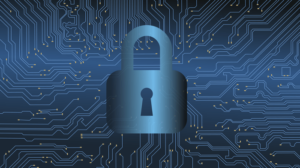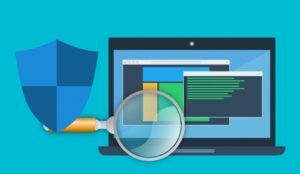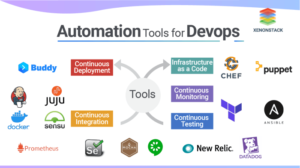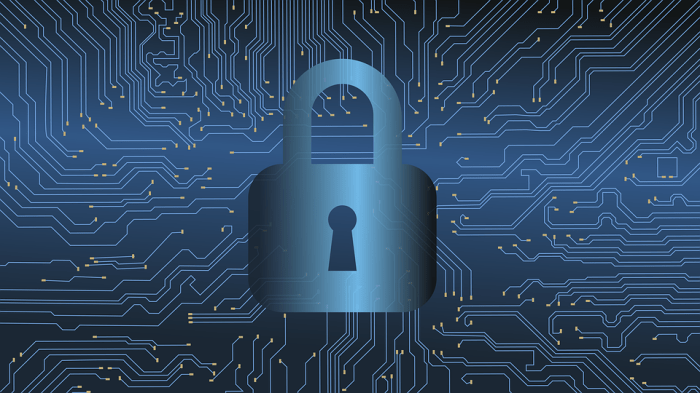
In our increasingly digital world, cybersecurity and tech risks are at the forefront of discussions surrounding technology. With the rapid evolution of technology, the potential threats to both individuals and businesses continue to grow, making it essential to understand the fundamentals of cybersecurity. This overview not only highlights key concepts but also emphasizes the necessity of implementing robust cybersecurity measures to mitigate risks associated with web hosting, domain names, and mobile computing.
As cyber threats evolve, so do the strategies and solutions to combat them. Understanding the different types of tech risks and their impacts is vital for anyone navigating the online landscape. By exploring best practices for securing digital assets, we can help safeguard our personal information and organizational integrity against the backdrop of an ever-changing technological environment.
Cybersecurity Fundamentals
In an increasingly digital world, cybersecurity has become a critical component of technology. It encompasses the practices and technologies designed to protect devices, networks, and data from unauthorized access and attacks. As our reliance on technology grows, so does the importance of understanding cybersecurity to safeguard sensitive information and maintain public trust.Cybersecurity involves several key concepts including confidentiality, integrity, and availability, often referred to as the CIA triad.
Confidentiality ensures that sensitive information is only accessible to those who are authorized, integrity refers to the accuracy and reliability of data, and availability guarantees that information is accessible when needed. With the rise of cyber threats, from hacking to data breaches, the implications of these concepts extend beyond individuals to entire organizations and even national security.
Common Types of Tech Risks
Tech risks can significantly affect both businesses and individuals. They stem from various sources, including malware, phishing attacks, insider threats, and vulnerabilities in software. Understanding these risks helps in devising better protection strategies. Key types of tech risks include:
- Malware: Malicious software designed to harm or exploit any programmable device, service, or network. Examples include viruses, worms, and ransomware, which can lead to data loss or operational disruptions.
- Phishing: A method of attempting to acquire sensitive information by masquerading as a trustworthy entity. This often occurs through deceptive emails containing links or attachments that can compromise systems.
- Insider Threats: Risks posed by individuals within an organization, such as employees or contractors, who may intentionally or unintentionally cause harm to company data and systems.
- Software Vulnerabilities: Flaws or weaknesses in software that can be exploited by attackers. Regular updates and patches are essential to mitigate these risks.
The impact of these tech risks is profound, ranging from financial losses to reputational damage. For instance, the 2017 Equifax data breach exposed the personal information of approximately 147 million people, resulting in significant financial repercussions and loss of consumer trust. Such incidents highlight the necessity for robust cybersecurity measures.
Basic Cybersecurity Measures
Implementing basic cybersecurity measures is vital for protecting both individuals and organizations from various threats. A proactive approach can significantly reduce vulnerabilities. Essential cybersecurity measures include:
- Using Strong Passwords: Creating complex passwords and changing them regularly is fundamental in protecting accounts and data.
- Enabling Two-Factor Authentication (2FA): Adding an extra layer of security by requiring a second form of verification helps prevent unauthorized access.
- Regular Software Updates: Keeping software up to date ensures that security patches are applied, reducing the risk of exploitation through known vulnerabilities.
- Data Backups: Regularly backing up data ensures that in the event of a breach or loss, information can be restored quickly.
- Employee Training: Educating staff on cybersecurity best practices and recognizing threats fosters a culture of security awareness within organizations.
By prioritizing these measures, individuals and organizations can mitigate risks and protect their digital assets effectively. For instance, businesses that implement regular training sessions on cybersecurity can significantly lower their chances of falling victim to phishing attacks, enhancing overall security posture.
Web Hosting and Domain Names Security

In today’s digital landscape, ensuring the security of web hosting services and domain names is paramount. As businesses increasingly rely on their online presence, cyber threats targeting these fundamental components can lead to significant financial losses and damage to reputation. Understanding the security risks and implementing robust protective measures is essential for safeguarding assets in the cyber realm.Web hosting and domain name registration are susceptible to various security risks.
These include unauthorized access, data breaches, denial-of-service attacks, and domain hijacking. Cybercriminals often exploit vulnerabilities in hosting environments or manipulate domain registrars to gain control over websites. Such incidents can result in website downtime, loss of sensitive customer data, and erosion of trust among users. Therefore, prioritizing security in these areas is crucial for any organization operating online.
Security Risks Associated with Web Hosting and Domain Name Registration
The following points highlight the key security risks involved in web hosting and domain name registration:
- Unauthorized Access: Weak passwords or lack of two-factor authentication can lead to unauthorized access to hosting accounts, allowing hackers to modify or delete websites.
- Data Breaches: Hosting services that do not employ strong security measures may expose sensitive data, including customer information, to cybercriminals.
- Denial-of-Service Attacks: Attackers may inundate a server with excessive traffic, causing legitimate users to be unable to access websites.
- Domain Hijacking: Cybercriminals can manipulate domain registration records, redirecting traffic to malicious sites or rendering the domain inaccessible.
To mitigate these risks, implementing best practices for securing web hosting services and protecting domain names is essential. By adopting a proactive approach, organizations can significantly enhance their overall security posture.
Best Practices for Securing Web Hosting Services and Domain Names
Establishing comprehensive security measures can help protect web hosting services and domain names. The following practices are crucial for effective security:
- Use Strong Passwords: Implement complex passwords and regular updates to prevent unauthorized access.
- Enable Two-Factor Authentication: Adding an extra layer of verification can greatly reduce the likelihood of unauthorized access to accounts.
- Regular Software Updates: Keeping all software, including content management systems and plugins, up-to-date helps protect against known vulnerabilities.
- Monitor Network Traffic: Implementing monitoring tools can help detect unusual activity and potential threats in real-time.
- Choose Reputable Hosting Providers: Opt for hosting services that offer robust security features, including firewalls, intrusion detection systems, and regular backups.
The Importance of SSL Certificates in Securing Online Transactions
SSL (Secure Sockets Layer) certificates play a critical role in ensuring secure online transactions. They encrypt data transmitted between a user’s browser and the web server, protecting sensitive information from interception by malicious actors. The relevance of SSL certificates extends beyond just encryption; they provide authentication, ensuring that users are communicating with the legitimate website. This builds trust and confidence among customers, a critical factor in e-commerce.
Without SSL, websites are susceptible to man-in-the-middle attacks, where hackers can intercept and manipulate data being transmitted.
“Websites without SSL certification may be flagged as ‘not secure,’ discouraging users from entering sensitive information.”
In summary, the security of web hosting and domain names is essential for maintaining the integrity and trustworthiness of online operations. Adopting best practices and leveraging technologies such as SSL certificates can significantly reduce vulnerabilities and enhance overall cybersecurity.
Mobile Computing and Cybersecurity
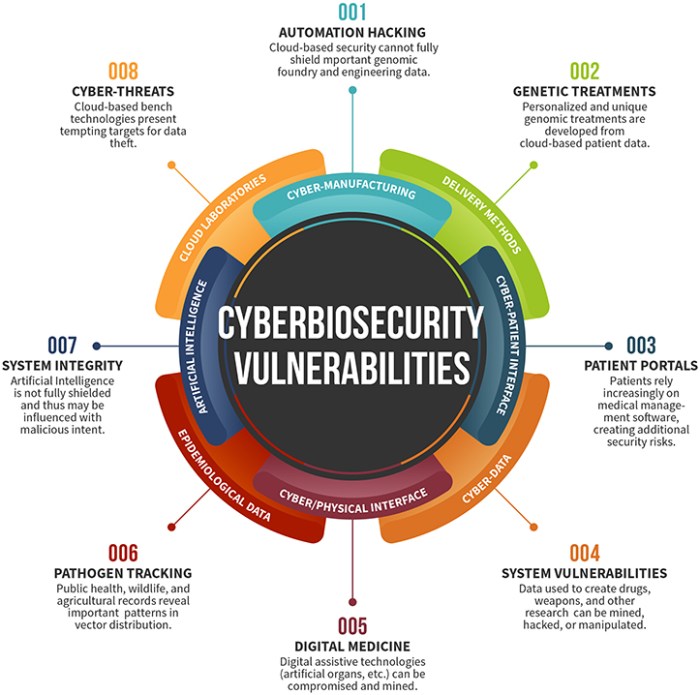
The rise of mobile computing has transformed the way we communicate, conduct business, and access information. However, this convenience comes with significant cybersecurity challenges that threaten the integrity and security of data on mobile devices. Understanding these challenges and implementing effective security measures is crucial for protecting user information and maintaining trust in mobile applications.Mobile computing devices and applications face various cybersecurity challenges due to their inherent nature.
The portability of devices like smartphones and tablets makes them vulnerable to physical theft, loss, and unauthorized access. Furthermore, the increasing reliance on public Wi-Fi networks exposes devices to threats such as man-in-the-middle attacks and data interception. Malicious applications, often masquerading as legitimate software, can compromise user data and device functionality, while operating systems may contain vulnerabilities that attackers can exploit.
Cybersecurity Challenges in Mobile Computing
Mobile devices encounter unique cybersecurity threats that differ from those faced by traditional computing systems. These threats include:
- Malware: Mobile devices are susceptible to malicious software designed to steal personal information, monitor user activity, or cause other harmful effects.
- Phishing Attacks: Cybercriminals often use deceptive messages to trick users into revealing sensitive information, such as passwords or credit card numbers.
- Insecure Network Connections: Public Wi-Fi networks can be a breeding ground for attackers who intercept data being transmitted between devices.
- Device Theft or Loss: The physical loss of a mobile device can lead to unauthorized access to personal data if not properly secured.
- Unpatched Software Vulnerabilities: Failure to update applications and operating systems can leave devices exposed to known security risks.
Securing Mobile Devices Against Threats
Implementing security measures is essential for protecting mobile devices and the sensitive information they hold. Here are several methods to enhance mobile security:
- Use Strong Passwords: Encourage the use of complex, unique passwords or biometric authentication methods (fingerprint, facial recognition) to secure devices.
- Regular Software Updates: Keep operating systems and applications up to date to protect against known vulnerabilities.
- Install Security Software: Utilize reputable mobile security applications to detect and prevent malware, phishing attempts, and other threats.
- Avoid Public Wi-Fi: Use a virtual private network (VPN) when connecting to public Wi-Fi to secure data transmission.
- Device Encryption: Enable encryption on mobile devices to protect stored data in the event of loss or theft.
Essential Security Features for Mobile Applications
To protect user data effectively, mobile applications should incorporate essential security features. A checklist of these features includes:
- Data Encryption: Secure sensitive user data through encryption both in transit and at rest.
- Secure Authentication: Implement multi-factor authentication (MFA) to enhance user verification processes.
- Regular Security Testing: Conduct thorough security assessments and penetration testing to identify and remediate vulnerabilities.
- Privacy Policy Transparency: Clearly communicate data collection and usage practices to users, ensuring compliance with privacy regulations.
- Emergency Response Mechanisms: Provide users with the ability to remotely wipe data from lost or stolen devices.
“Mobile applications must prioritize security to safeguard user data and maintain trust in an increasingly mobile-centric world.”
Final Wrap-Up
In conclusion, cybersecurity and tech risks present a significant challenge that demands our attention and proactive measures. As we have explored various facets of cybersecurity, from web hosting to mobile computing, it becomes clear that staying informed and implementing the right security protocols is crucial. By prioritizing cybersecurity, we can create a safer digital environment for all users, ensuring the protection of our valuable data against evolving threats.
Q&A
What are the most common types of cyber threats?
The most common types of cyber threats include malware, phishing attacks, ransomware, and denial-of-service (DoS) attacks.
How can individuals protect themselves online?
Individuals can protect themselves by using strong, unique passwords, enabling two-factor authentication, and being cautious with unsolicited emails and links.
What role do firewalls play in cybersecurity?
Firewalls act as a barrier between a trusted network and untrusted networks, monitoring incoming and outgoing traffic to prevent unauthorized access.
Are SSL certificates necessary for all websites?
While not mandatory for all websites, SSL certificates are essential for any site that processes sensitive information, such as personal data or online payments.
How often should organizations update their cybersecurity measures?
Organizations should regularly review and update their cybersecurity measures, ideally at least once a year or whenever there are significant changes to their systems or technology.

